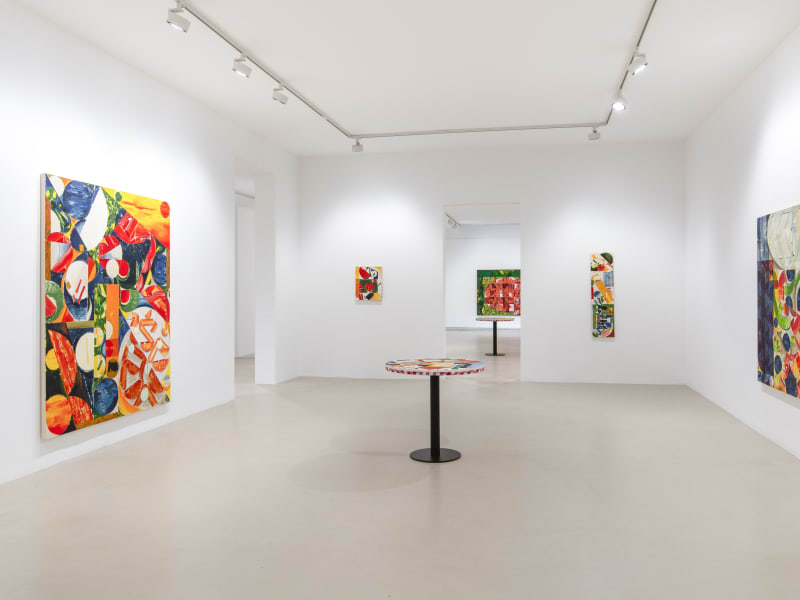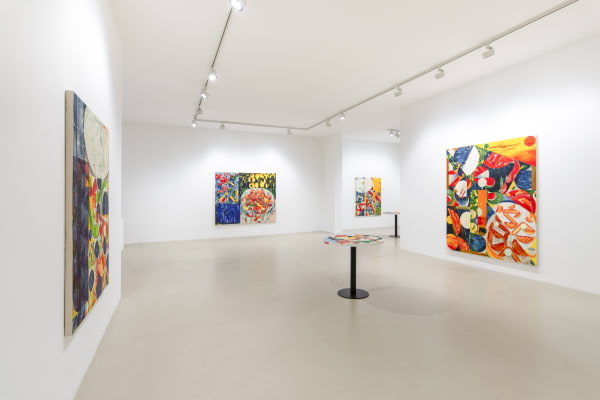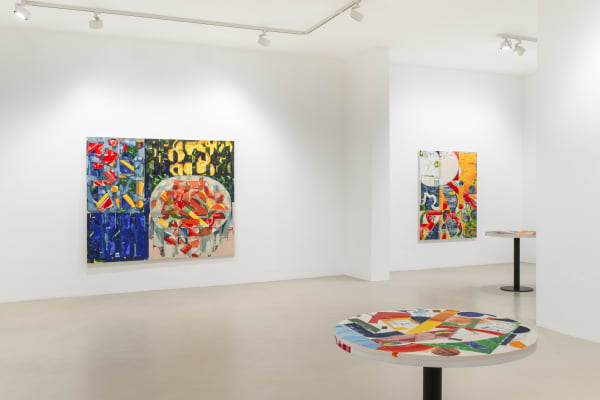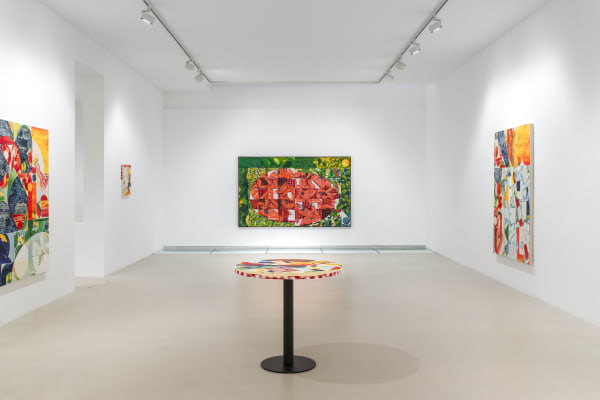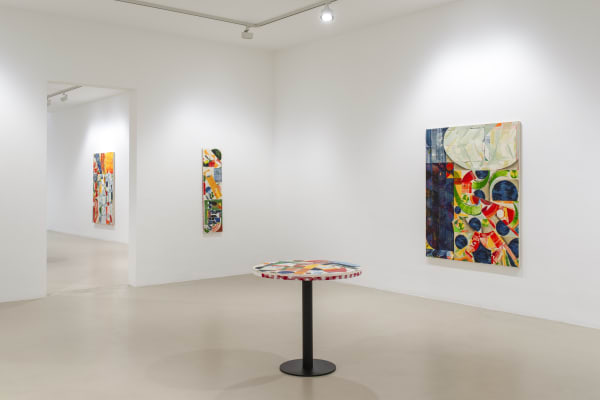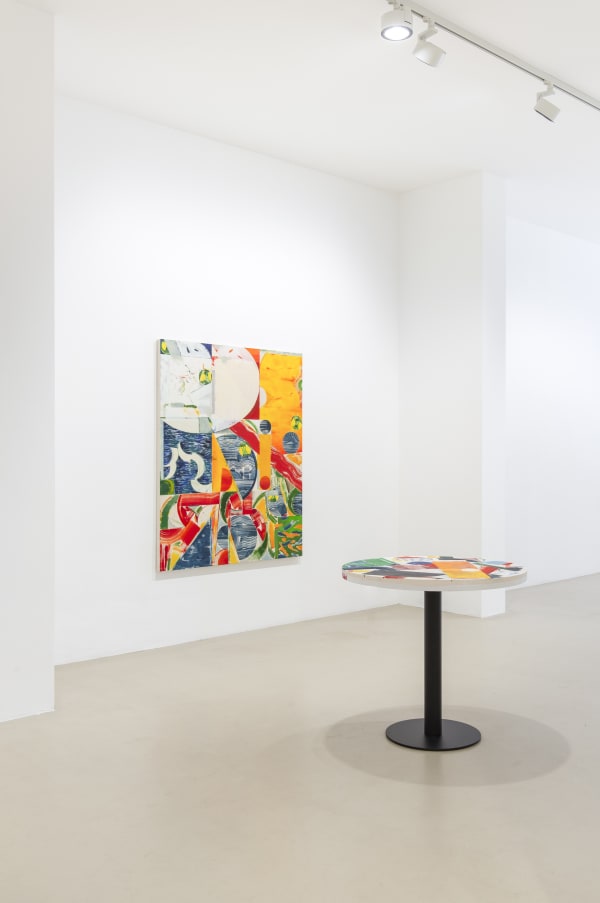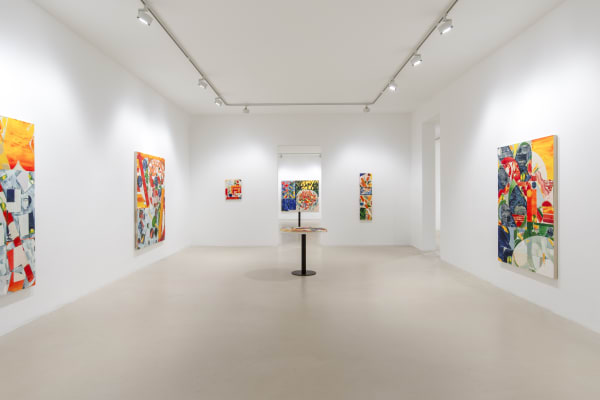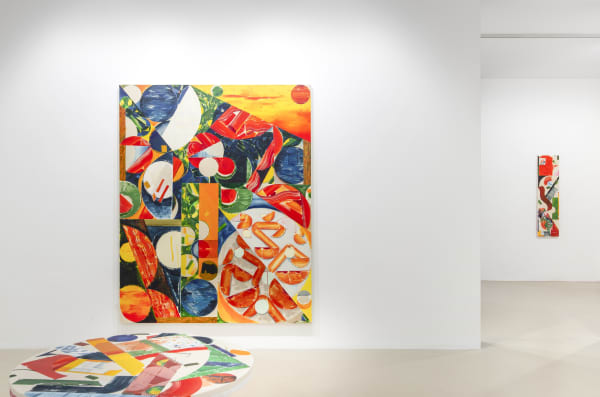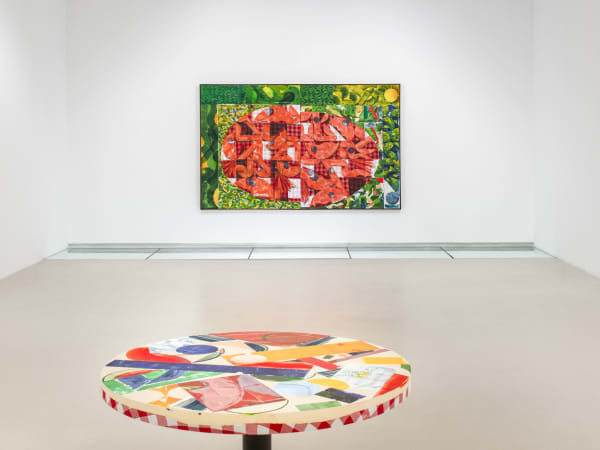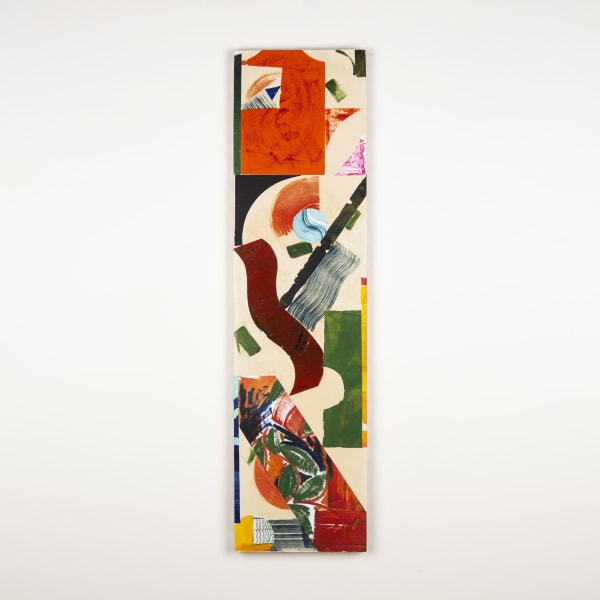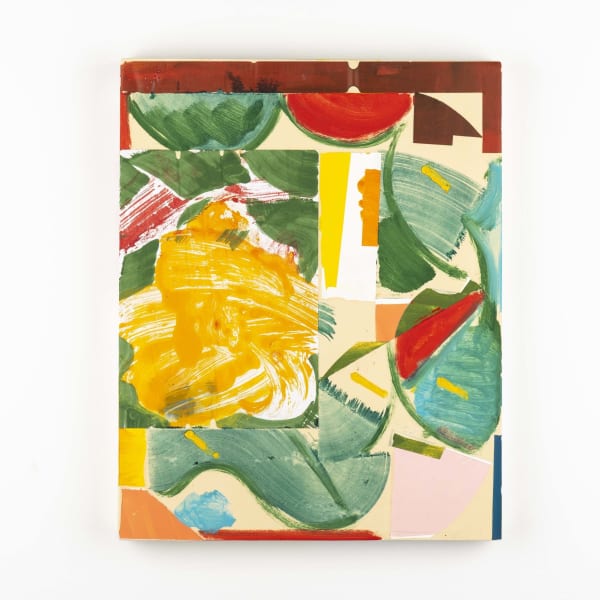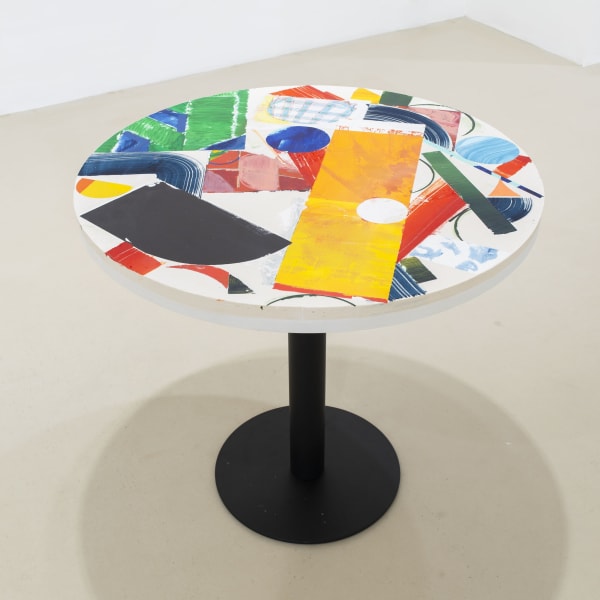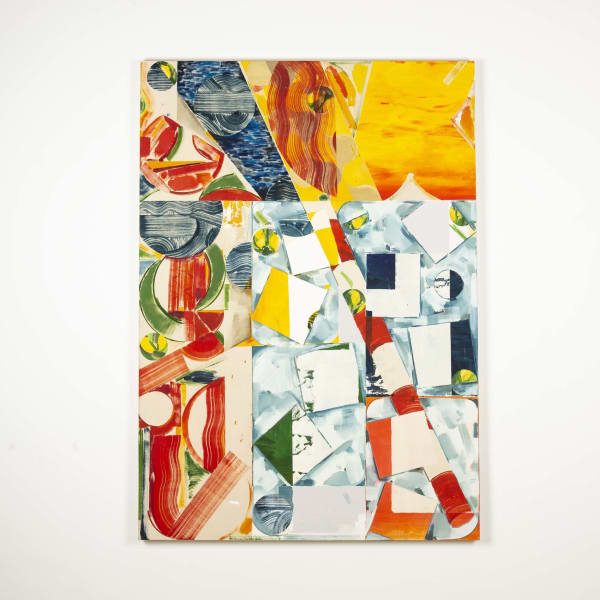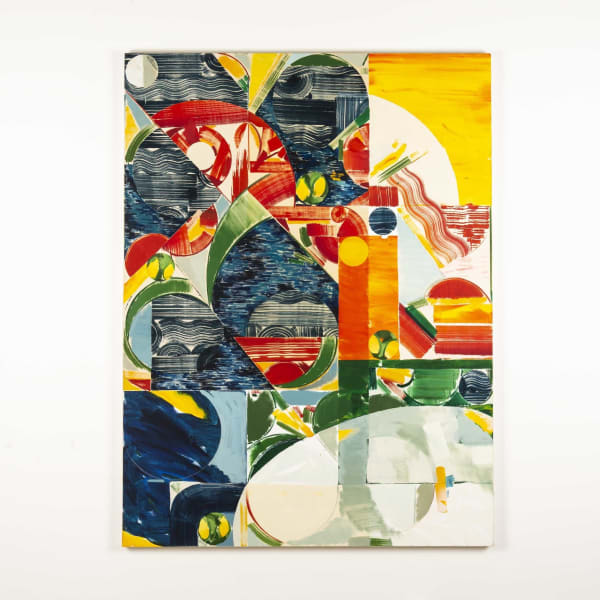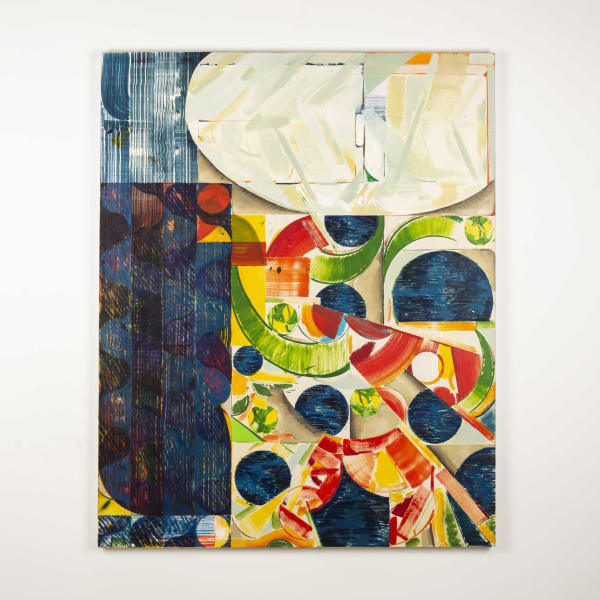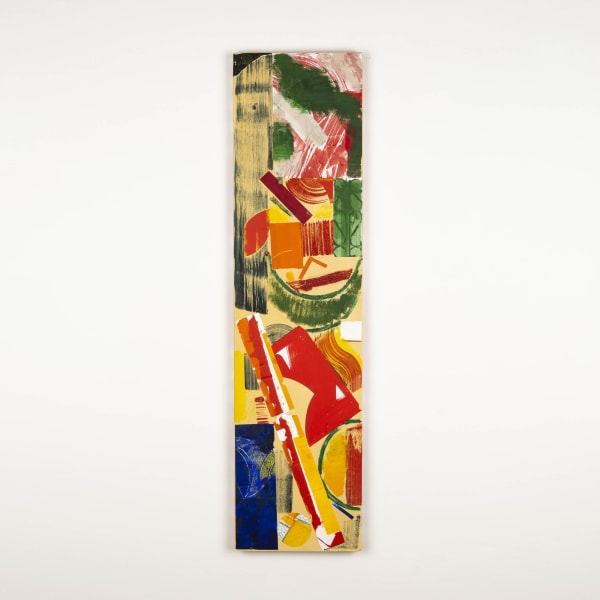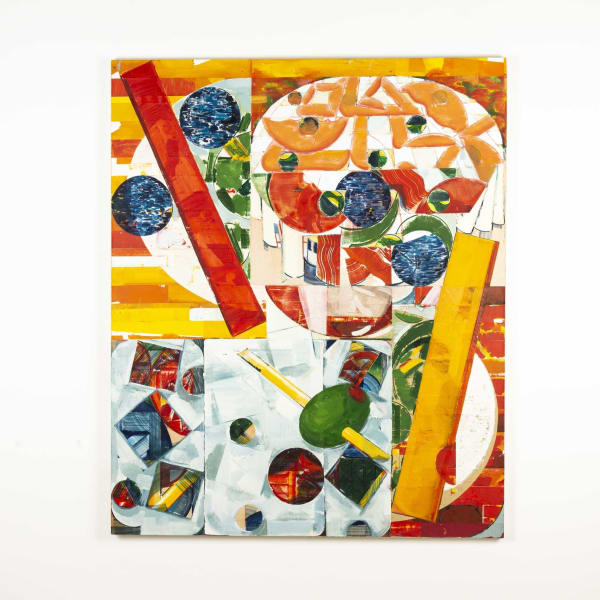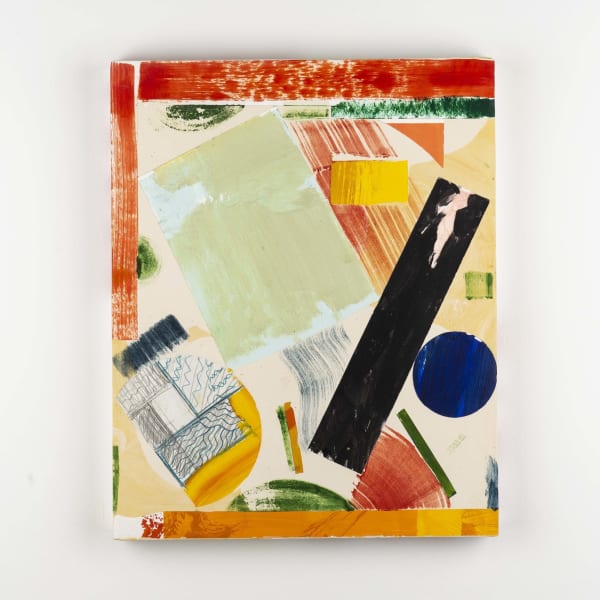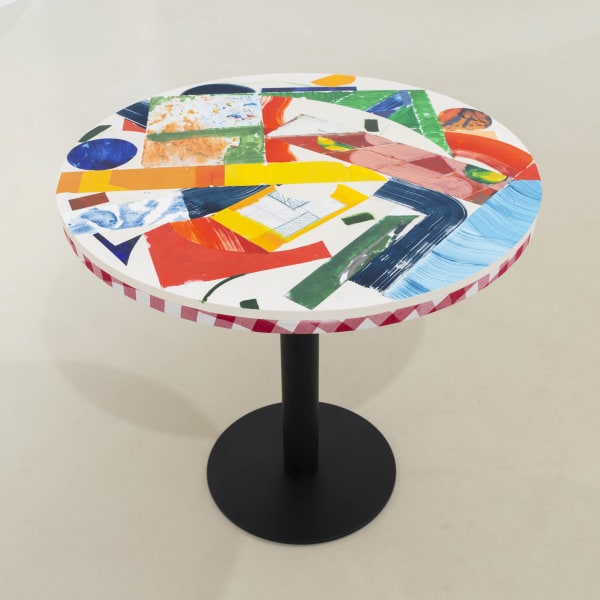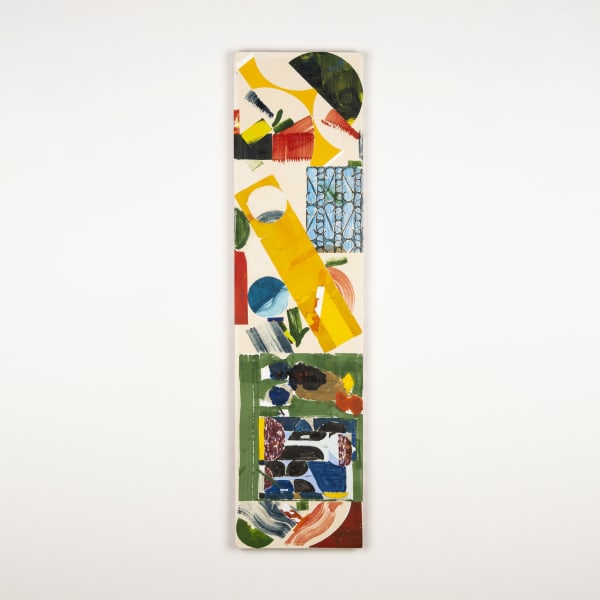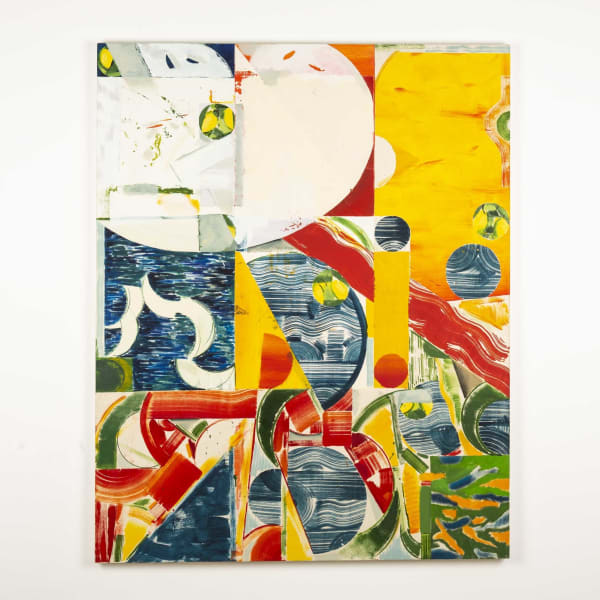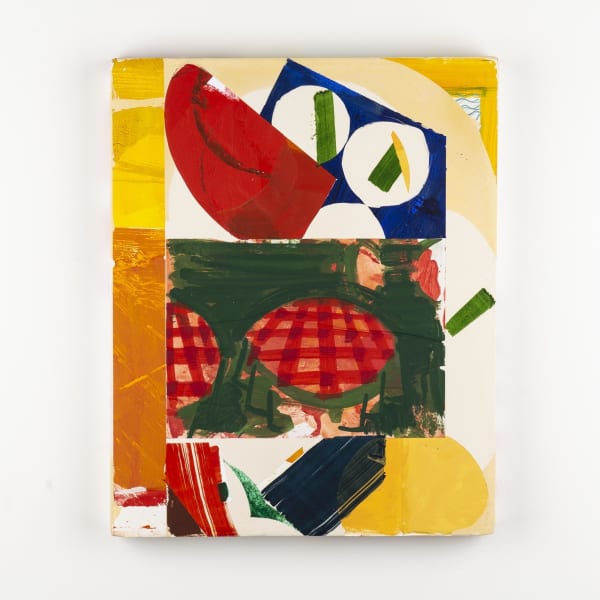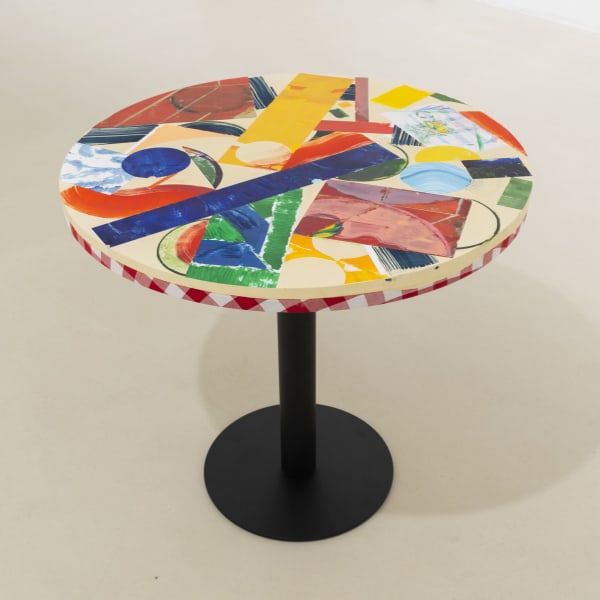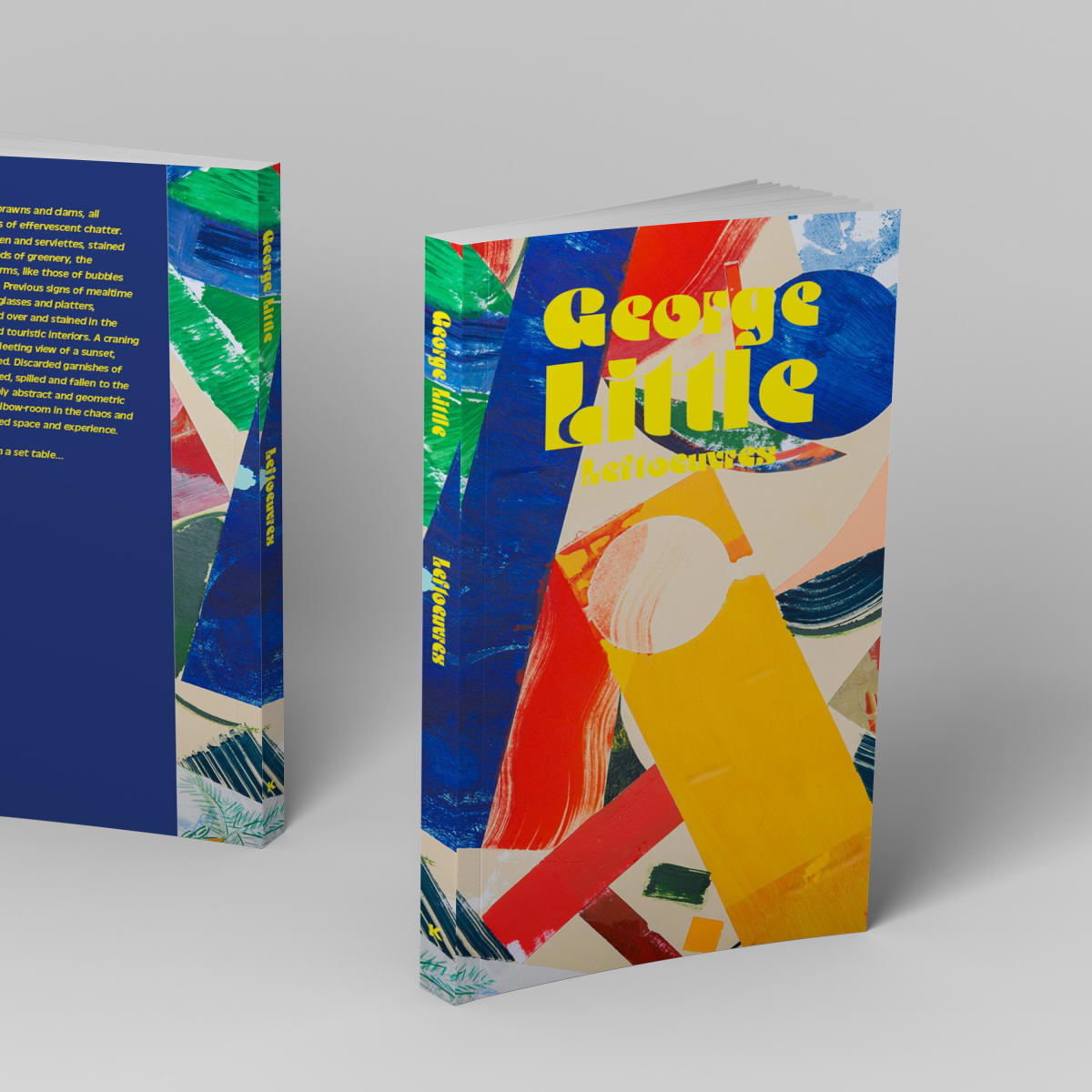george little: leftoeuvres
Leftoeuvres – a text by Catherine Parsonage.
Picasso loved a pun. The newspaper Le Journal becomes JOU or even URNAL, literally opening up the word and the work for play, or joue.
Yet play is not always synonymous with the idea of work. Perhaps only certain jobs allow for an experimental lightness in the production of their oeuvres: painters, musicians, chefs. The studio and the kitchen are not so different. Both are sites of transmutation kept behind closed doors, mythologized spaces from which works of art come forth: paintings or plates of clams.
First though, the Hors-d’œuvres. Light-hearted little morsels poised between finger and thumb to be POP-ped into the mouth. Then for the clams. Plates of butter-soaked linguine, puntarelle, anchovy-spiked sauces, placed atop the tablecloth. Booze arrives in waves, while conversation and egos effervesce and overflow. The surface becomes a collage of curves: lemon slices and piquant olives intersect with crisp serviettes, soon to be stained with red wine rims.
Like the table, paintings are also a locus for an event of sorts, even an “arena in which to act”* if we want to be heroic about it. Painting is an arena where a kind of combustion occurs. A reaction between all of the stuff that has been collected and collated: felt-tipped scribbles, artist books, memories, menus, liquid Jesmonite – like cream, photographs, and of course the paint itself. When the charismatic, jostling forms settle into place on the surface of the canvas, the process is complete.
Yet outside the edges of the painting there is so much that remains. Slivers and fragments which have been cut away, edited out, often scraped into the bin. Debris so rich, but not usually fit for public consumption. The wily Ancient Romans had a solution for this: following their banquets of decadent indulgence the debris usually swept away would be immortalized; lobster claws, shellfish, the last handful of grapes would be enshrined in decorative mosaics, to be consumed in an entirely different way. Perhaps it is possible for the wily painter to do the same. And if so, leftovers are no longer left at all, they are renewed and transformed.
*Harold Rosenberg, The American Action Painters, 1952
-
 George Little, A runner, 2020
George Little, A runner, 2020 -
 George Little, A scuffle (for the bill), 2020
George Little, A scuffle (for the bill), 2020 -
 George Little, Clammer, 2020
George Little, Clammer, 2020 -
 George Little, Gueridon I, 2020
George Little, Gueridon I, 2020
-
 George Little, Half-light orderings, 2020
George Little, Half-light orderings, 2020 -
 George Little, Highballed, 2020
George Little, Highballed, 2020 -
 George Little, It all arrived at once, 2020
George Little, It all arrived at once, 2020 -
 George Little, Let's split (downpour), 2020
George Little, Let's split (downpour), 2020
-
 George Little, Mess en place, 2020
George Little, Mess en place, 2020 -
 George Little, Missed your mouth, 2020
George Little, Missed your mouth, 2020 -
 George Little, Overordered, 2020
George Little, Overordered, 2020 -
 George Little, Prix fixe'd, 2020
George Little, Prix fixe'd, 2020
-
 George Little, Gueridon III, 2020
George Little, Gueridon III, 2020 -
 George Little, Table by the door, 2020
George Little, Table by the door, 2020 -
 George Little, Slurp, 2020
George Little, Slurp, 2020 -
 George Little, Tip then dip, 2020
George Little, Tip then dip, 2020
